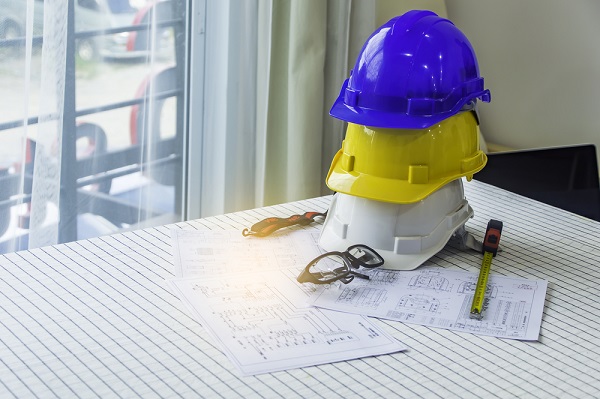How COVID-19 Impacted the Builders Risk Market

By: Olivia Overman
COVID-19 has left its mark on every industry over the past year, and the construction industry is no different. As stores, restaurants and businesses shuttered in early March 2020, construction projects were also suspended in an effort to stunt the spread of the virus. Boston Mayor Martin Walsh declared that all regular construction activities should be suspended starting March 17, 2020—the first major U.S. city to suspend all construction work within the city limits.
Nationwide’s New Agent Authority construction research report also revealed 7 in ten construction business owners were negatively affected by COVID-19 and emphasized the need for increased planning, as more than 1 in 5 business owners lacked plans to help their business operate through economic uncertainty.
The construction industry battled direct and collateral effects from COVID-19, according to the report. As many as 27% of contractors did not have proper plans in place to successfully navigate project site shutdowns and reopenings, 24% didn’t have a business plan to account for a potential recession and 23% didn’t have enough employees or subcontractors to meet project demand.
“Early in the pandemic, we saw construction projects stall or stop temporarily as the industry worked out new rules and best practices for implementing employee safety protocols,” says Chelsea Bergen, area assistant vice president, Risk Placement Services.
And in many cases, contractors realized that their builders risk contract did not provide the coverage they needed when they returned several months later. “Within every builders risk coverage form there are terms for when coverage ceases and some are more restrictive than others,” Bergen says.
Many admitted insurers are unwilling to provide more than one extension to coverage, leaving many contractors to turn to the excess & surplus lines market, a non-admitted market that is now inundated with builders risk business, according to the 2021 U.S. Property Market Outlook report from RPS.
In particular, builders risk is “a very challenging market right now for frame construction,” says Linda Stueber, senior vice president of middle market commercial lines, Nationwide. “There’s been a lot of poor loss experience across the industry. If you’re looking at smaller projects of up to $5 million and it’s a frame project, there’s probably interest, but if you’re talking about a bigger frame project of $20 million, there’s not a lot of interest there.”
While the markets continue to quote frame construction projects, carriers are lowering capacity and tightening terms and conditions. For larger frame projects, “multiple insurance carriers are required to reach the insured’s required limits for the project,” Bergen says.
“With capacity shrinking, rates have certainly gone up and higher rates will likely remain as we look ahead this year,” says Ryan Mee, vice president and manager, inland marine underwriting, Liberty Mutual Insurance. “We also expect to see new trends with wind deductibles, in addition to base rates.”
“The pandemic had an immediate impact on midsized to larger commercial structures such as hotels and office buildings,” Mee says. “Those buildings represent industries that were heavily impacted by COVID-19 and are still struggling to attract occupancy.”
Additionally, construction companies of all sizes are experiencing “significant challenges with material and equipment delays, as well as increased costs and subsequent higher home prices, which may result in an increase in the cost of coverage and possibly longer timeframes for project completion,” says Alan Ferguson, president, US Assure.
“Lumber prices are going through the roof, material costs are going through the roof and then we have to worry about supply chain delays,” agrees Kurt Sokolowski, senior partner at TriSure, an Alera Group Company. “Everyone’s so focused on the construction contract, but more and more contractors are pre-buying or buying lumber sooner and maybe storing it at a temporary location or warehouse. That’s a different concern if you’re pre-buying $2 million of material and just storing it.”
Yet overall there is room for optimism. “There are, and continue to be, a large number of insurance carriers that participate in the builders risk space,” Bergen says. “This is not expected to change.”
“In some ways, the pandemic has helped the single-family home construction market,” Ferguson says, who outlined these three ways that has occurred in the past year:
1) Low consumer debt-to-income ratios. Higher income households limited discretionary spending and concentrated on reducing debt, making home improvements or bolstering savings to purchase new homes.
2) Increased demand for homes. Fewer homeowners are selling their homes. This has put a major squeeze on inventory in the trade-up market, which means buyers may have to build new homes. The significant increase in demand for housing is pulling prices higher than ever before with the median new home price now 50% above the 2006 peak.
3) Lower unemployment. Overall, data shows that unemployment in those earning over $60,000 annually fell less and recovered more quickly than for those who earned less.
“And while there is still plenty of capacity in the very small space, such as for single family homes, capacity for larger projects has become more challenging to find and will come at a much higher cost,” Mee says.
“Opportunities in the builders risk market are growing in tandem with construction,” Ferguson says. “Whether it’s new construction, a renovation or remodel project, or even installation, there is a need for course-of-construction insurance. The rise in single family home sales, longer lead time for projects, backlog and demand for resources and the resulting increase in prices, are all driving factors for protecting an owner’s investment with builders risk insurance.”
Olivia Overman is IA content editor.










